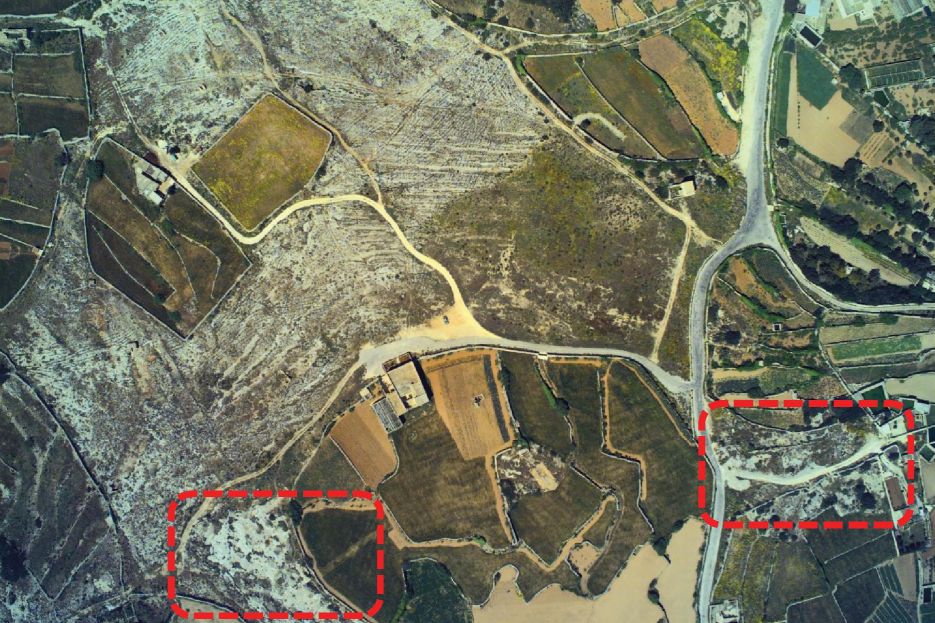LARSOCS is one of the projects being funded by the RIDT. It brings together three major departments within the University of Malta and could, in time, revolutionise numerous tasks being undertaken by each of them. Here, DR ING. JOHN CHARLES BETTS explains the vision.

Dr Ing John Betts
As this blog has shown over the past year or so, every department within the University of Malta is furthering its role in research and innovation, thus creating new knowledge and acquiring new tools the next generation of students and researchers will be able to tap into. More importantly, however, more departments and researchers are understanding the value of working together towards reaching a common goal, and this is exactly where LARSOCS comes in.
LARSOCS, which stands for Low Altitude Remote Sensing Over Compact Sites, is a new project that started just a few weeks ago. Spearheaded by the Department of Classics & Archaeology, the project will focus on capacity-building and will put new systems in place for remote sensing.
“Remote sensing is a process where you effectively use some type of sensor to – although not always – produce an image,” explains Dr Ing. John Charles Betts, who, on top of being the coordinator of the project, is also a senior lecturer and the only engineer within the Faculty of Arts.
Examples of such remote sensing equipment and projects include underwater vehicles, like towfish, which are submersible machines that are towed by surface vessels and have sonar and cameras; sub-surface systems such as ground-penetrating radar that examines what’s below ground; and quadcopters that fly above landscapes and take images.
“In this case, we’ll be using a drone to map two historical sites from an altitude of less than 50m, thus giving us images with much higher resolution than we’d normally have,” he continues. “The project, however, has two branches: The first is to buy an off-the-shelf drone required for the project, which will then give us and other interested departments at University a capability for aerial imaging. This will be used to produce 3D images of archaeological sites. The second part of the project will be to create a control system for a drone, enabling automated flight control, as well as to take photos of different, exposed archaeological strata at required intervals during fieldwork in order to produce a 3D record of the site.”

Clapham Junction, Dingli, showing antique quarry sites (marked) from Agristat Project 1999
This inter-departmental project will see various researchers and departments coming together to make it all possible. Activities ranging from the design of the modified drone control system, which will have to follow beacons (markers) at sites, to the analysis of data, will bring together two different departments and one institute.
The researchers who will take part in this are Dr Ing. Marc Anthony Azzopardi and Dr Ing. Brian Zammit from the Department of Electronics Systems Engineering, Dr Charles Galdies from the Institue of Earth Sciences, Dr Maxine Anastasi from the Department of Classics & Archeology and Dr Gianmarco Alberti from Italy.
“The project may seem straight-forward but it also has various challenges,” says Dr Ing. Betts. “One of our biggest hurdles is going to get the drone to
fly underneath the tents we usually set up to cover archeologists from the elements. That’s in the electronics engineers’ capable hands…”
Starting off, the team will be piloting the project at a simple-yet-insufficiently (at the planned resolution) documented old quarry site. Using the data documented by the drone, they will then analyse patterns that stand out and create a 3D-model of the place. Moreover, the data may even yield environmental, historical and anthropological information that could be used by other departments for a variety of reasons.
“We’ve only just started, but we’re already incredibly excited about this. This is research and learning coming together, as it will give students hands-on practice that will prove invaluable in the long run!”
As RIDT, we wish the LARSOCS team the best of luck!
You can be part of this fascinating world of research, too, by helping many others achieve their breakthroughs in all the faculties of the University of Malta. Please click here for more information on how to donate to research of this kind through the Research Trust (RIDT).
